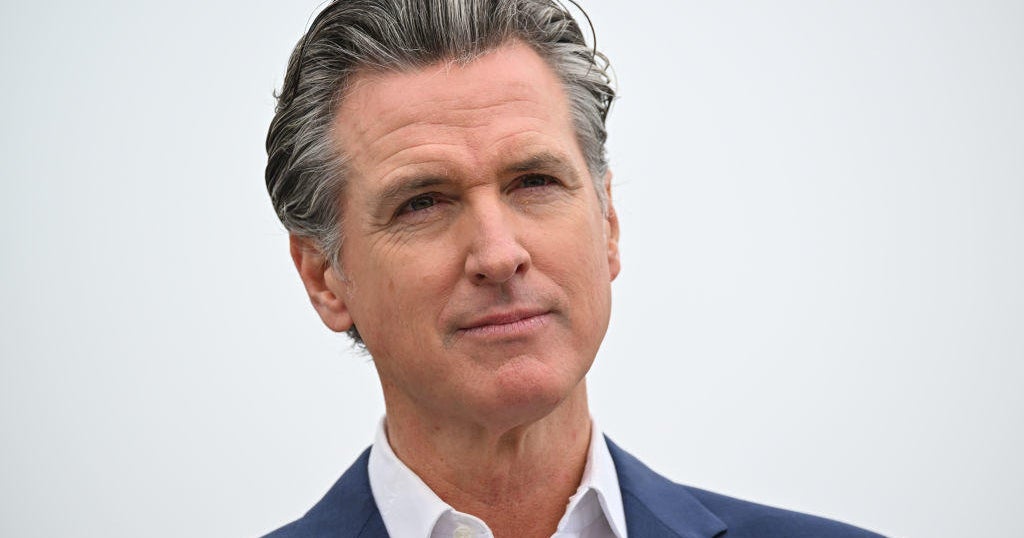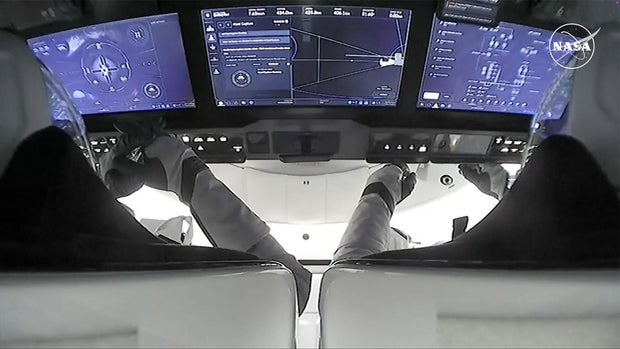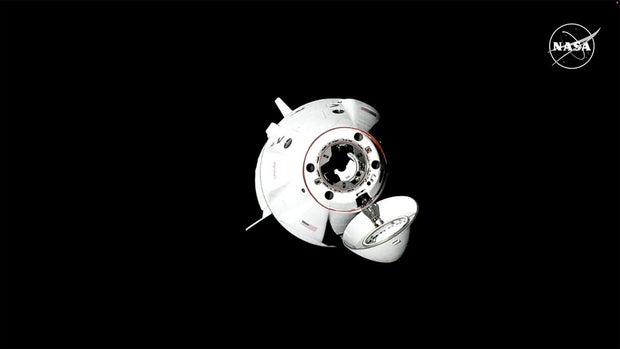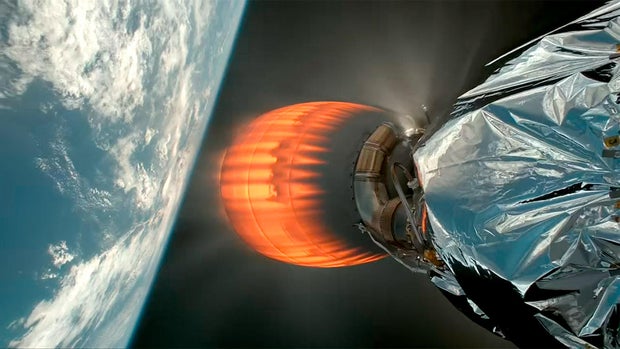CBS News
Buying 1-ounce gold bars? 3 ways to authenticate them

Getty Images/iStockphoto
Interest in gold investing has been steadily climbing over the last few years — and investors have had their eyes locked on gold for the last few months in particular. One driver in that equation has been inflation, which has led investors to seek out safe-haven assets, like gold, to help preserve their wealth. And, gold’s price has been on an upward trajectory since the start of the year, resulting in numerous shattered price records, helping to attract even more attention from seasoned and novice investors alike.
When coupled with the other benefits gold offers, it’s easy to see why this precious metal is an attractive option for investors, especially in today’s complex economic landscape. If you’re going to put money into gold, though, it’s important to understand that this type of investment requires careful consideration. After all, the market offers a variety of gold assets, from gold bullion to gold stocks and gold exchange-traded funds (ETFs), and each comes with its own set of advantages and risks.
Among these choices, physical gold, particularly in the form of 1-ounce gold bars, can be a wise choice to consider. These bars offer a tangible asset in a standard size, making them easily tradable and storable, and their relatively low premium appeals to cost-conscious investors. However, the physical gold market is not immune to fraud, and counterfeit gold bars pose a real threat to unsuspecting buyers. So, if you’re thinking about adding 1-ounce gold bars to your portfolio, you need to know how to authenticate them.
Ready to start investing in gold? Learn more about your top options here.
Buying 1-ounce gold bars? 3 ways to authenticate them
Here are a few key ways to authenticate your 1-ounce gold bars:
Rely on provenance and dealer reputation
Perhaps the most crucial step to ensuring that you’re purchasing authentic gold bars is to buy them from well-established, reputable gold dealers. If you aren’t sure where to start your search, it can help to look for sellers accredited by industry organizations like the Professional Numismatists Guild (PNG) or the American Numismatic Association (ANA). The PNG and ANA can also provide tamper-evident holders and guarantee the bar’s authenticity through their third-party grading services.
You may also want to verify the bar’s serial number with the manufacturer, as most reputable producers maintain databases with this information. The provenance of the gold bar — which is its documented history of ownership — can provide further assurance of its authenticity.
It also helps to familiarize yourself with the characteristics of genuine gold bars. Many mints and refineries provide detailed information about their products’ security features, so be sure to stay educated on the topic. The more you know, the harder it is for you to be fooled.
Find out how the right gold investment could pay off for you now.
Use visual inspection and physical tests
To authenticate your gold bars, you should also conduct a thorough visual examination. Authentic gold bars should have clean, sharp edges and corners, with precise stamping of the manufacturer’s name, weight, purity and serial number. You can also use a caliper to measure the bar’s dimensions and a precise scale to weigh it. A standard 1-ounce gold bar should weigh exactly 31.1 grams.
Certain tests, like the magnet test, can quickly identify some fakes, as gold is not magnetic. However, be aware that some counterfeiters use non-magnetic metals, so this test alone is not definitive. The ping test, where you gently tap the bar with a small hammer, can also be revealing. Pure gold produces a high-pitched ringing sound that sustains for a few seconds, while other metals produce a duller sound.
If you need more conclusive results, it may be worth considering advanced testing methods. For example, X-ray fluorescence (XRF) analysis uses X-rays to determine the elemental composition of the bar without damaging it. Many reputable dealers have XRF analyzers and can perform this test for you. Or, the specific gravity test, which involves calculating the bar’s density by weighing it in air and then in water, is highly effective as gold has a specific gravity of 19.3, higher than most metals used in counterfeits.
Incorporate technology into the authentication process
There are also some tech-based methods for authenticating your gold bars. For example, some companies offer smartphone apps that can scan and verify gold bars using image recognition technology. While not foolproof, these can provide an additional layer of verification to your process. An ultrasound test could also come in handy, as this advanced method uses sound waves to detect inconsistencies in the internal structure of the bar. If inconsistencies are found, it could indicate that the bar you’re buying is not solid gold.
The bottom line
Investing in 1-ounce gold bars can be a smart move in today’s economic climate, offering tangibility, liquidity and potential protection against inflation and market volatility. However, the value of this investment hinges, in large part, on the authenticity of the gold you purchase. By staying vigilant and employing these authentication methods, you can help ensure that your gold investment is genuine, maximizing its potential benefits to your portfolio.
CBS News
Crew Dragon brings two-man crew to space station amid probe of upper stage anomaly

A day after launching from the Kennedy Space Center, a SpaceX Crew Dragon spacecraft caught up with the International Space Station and moved in for docking Sunday, bringing a NASA astronaut and a Russian cosmonaut to the outpost to join two Starliner astronauts for a five-month tour of duty.
The rendezvous came amid word from SpaceX that it’s suspending Falcon 9 launches while engineers work to figure out what caused the crew’s Falcon 9 upper stage to misfire Saturday, after the Crew Dragon was released to fly on its own, resulting in an off-target re-entry over the Pacific Ocean.
Sen
SpaceX said in a post on the social media platform X that the second stage “experienced an off-nominal deorbit burn. As a result, the second stage safely landed in the ocean, but outside of the targeted area. We will resume launching after we better understand root cause.”
It was the second Falcon 9 upper stage anomaly in less than three months and the third failure counting a first stage landing mishap. It’s not yet known what impact, if any, the latest problem might have on downstream flights, including two high-priority October launches to send NASA and European Space Agency probes on voyages to Jupiter and an asteroid.
But the anomaly had no impact on the Crew Dragon’s 28-hour rendezvous with the space station, and the ferry ship, carrying commander Nick Hague and cosmonaut Alexander Gorbunov, docked at the lab’s forward port at 5:30 p.m. EDT as the two spacecraft sailed 265 miles above southern Africa.
Standing by to welcome Hague and Gorbunov aboard were Starliner commander Barry “Butch” Wilmore and pilot Sunita Williams, now serving as commander of the space station, along with Soyuz MS-26/72S commander Aleksey Ovchinin, Ivan Vagner and NASA astronaut Don Pettit.
Hague, Gorbunov, Wilmore and Williams will replace Crew 8 commander Matthew Dominick, Mike Barratt, Jeanette Epps and cosmonaut Alexander Grebenkin when they return to Earth around Oct. 7 to wrap up a 217-day stay in space.
Wilmore and Williams took off on the Starliner’s first piloted test flight, a mission expected to last a little more than a week, on June 5. During rendezvous with the space station the day after launch, multiple helium leaks in the ship’s propulsion system were detected and five maneuvering jets failed to operate properly.
SpaceX/NASA
NASA and Boeing spent the next three months carrying out tests and analyses to determine if the Starliner could safely bring its crew back to Earth. In the end, NASA managers decided to keep Wilmore and Williams aboard the station and to bring the Starliner down without its crew.
They made that decision knowing the two astronauts could come home aboard the Crew Dragon launched Saturday. Two Crew 9 astronauts — Zena Cardman and Stephanie Wilson — were removed from the crew to provide seats for Wilmore and Williams when Hague and Gorbunov return to Earth in February.
When they finally get home, Wilmore and Williams will have logged 262 days in space compared to five months for Hague and Gorbunov.
The Crew 9 flight was SpaceX’s 95th launch so far this year. And it was the company’s third flight in less than three months to run into problems.
NASA
SpaceX recovers, refurbishes and relaunches Falcon 9 first stage boosters, which can land in California, Florida or aboard off-shore droneships. The second stages are not recovered.
Instead, SpaceX commands upper stage engine firings to drive the stages back into the atmosphere for a destructive breakup, making sure any debris falls into an ocean well away from shipping lanes or populated areas.
By taking Falcon 9 upper stages out of orbit after their missions, SpaceX ensures they will never pose a collision risk with other spacecraft or add to the space debris already in low-Earth orbit.
During launch of 20 Starlink internet satellites on July 11, the Falcon 9’s second stage malfunctioned and failed to complete a “burn” needed to reach the proper orbit. Stuck in a lower-than-planned orbit, all 20 satellites fell back into the atmosphere and burned up.
SpaceX briefly suspended flights at the direction of the Federal Aviation Administration, but the problem was quickly identified and fixed, and the company was allowed to resume flights while the investigation continued.
Then, during another Starlink launch on Aug. 28, a Falcon 9 first stage descending to toward landing crashed onto the deck of an off-shore drone ship. SpaceX has not provided any information about what went wrong or what, if any, corrective actions were required, but flights resumed three days later.
SpaceX provided no details about the off-target re-entry of the Crew Dragon’s upper stage other than the post late Saturday on X.
SpaceX
Going into Saturday’s launch, SpaceX was planning to launch 20 OneWeb broadband satellites from Vandenberg Space Force Base in California this week, followed by a Starlink launch from Cape Canaveral. Both flights are now on hold.
More important, a Falcon 9 will be used to launch the European Space Agency’s $390 million Hera asteroid probe from the Cape Canaveral Space Force Station around Oct. 7, followed by launch of NASA’s $5.2 billion Europa Clipper Jupiter probe from the Kennedy Space Center on Oct. 10.
Hera is bound for the asteroid Didymos and its moon Dimorphos, a small body that NASA’s DART probe crashed into in 2022. Hera will study the system in detail to determine how the moon’s structure and orbit were changed by the impact. A primary goal is to learn more about how an asteroid threatening Earth some day might be safely diverted.
The Europa Clipper is a “flagship” mission to explore Jupiter’s ice-covered moon Europa and to determine the habitability of a vast sub-surface ocean. It is the largest planetary probe ever built, requiring a powerful Falcon Heavy rocket, made up of three strapped-together Falcon 9 first stages and a single upper stage, to send it on its way.
Both missions must get off the ground during relatively short “planetary” launch windows defined by the positions of Earth, Mars, Jupiter and the asteroids. Hera’s window opens on Oct. 7 and closes on Oct. 25. The Europa Clipper launch window opens on Oct. 10 and runs through Nov. 6.
Missing a planetary window can result in long, costly delays while while Earth, Jupiter, the asteroids and Mars, needed for gravity assist flybys, return to favorable orbital positions enabling launch.
Armando Piloto, a senior manager with the Launch Services Program at the Kennedy Space Center, said the Falcon Heavy stages used for the Europa Clipper mission will not be recovered. Instead, they will consume all of their propellants to achieve the velocity needed to send the probe on a five-year voyage to Jupiter.
“I’ll point out that during the burn of the second stage, the vehicle with the spacecraft, will be traveling approximately 25,000 miles per hour, which will be the fastest speed for a Falcon second stage ever for Europa Clipper,” he said during a recent briefing.
Given SpaceX’s rapid recoveries after the July and August malfunctions, the upper stage re-entry anomaly Saturday presumably will be resolved in time to get the Europa Clipper and Hera missions off the ground within their launch windows. But that will depend on the results of the latest failure investigation.
CBS News
California Gov. Gavin Newsom vetoes first-in-nation AI safety bill

California Gov. Gavin Newsom on Sunday vetoed a landmark bill aimed at establishing first-in-the-nation safety measures for large artificial intelligence models.
The decision is a major blow to efforts attempting to rein in the homegrown industry that is rapidly evolving with little oversight. The bill would have established some of the first regulations on large-scale AI models in the nation and paved the way for AI safety regulations across the country, supporters said.
Earlier this month, the Democratic governor told an audience at Dreamforce, an annual conference hosted by software giant Salesforce, that California must lead in regulating AI in the face of federal inaction but that the proposal “can have a chilling effect on the industry.”
The proposal, which drew fierce opposition from startups, tech giants and several Democratic House members, could have hurt the homegrown industry by establishing rigid requirements, Newsom said.
“While well-intentioned, SB 1047 does not take into account whether an AI system is deployed in high-risk environments, involves critical decision-making or the use of sensitive data,” Newsom said in a statement. “Instead, the bill applies stringent standards to even the most basic functions — so long as a large system deploys it. I do not believe this is the best approach to protecting the public from real threats posed by the technology.”
Newsom on Sunday instead announced that the state will partner with several industry experts, including AI pioneer Fei-Fei Li, to develop guardrails around powerful AI models. Li opposed the AI safety proposal.
The measure, aimed at reducing potential risks created by AI, would have required companies to test their models and publicly disclose their safety protocols to prevent the models from being manipulated to, for example, wipe out the state’s electric grid or help build chemical weapons. Experts say those scenarios could be possible in the future as the industry continues to rapidly advance. It also would have provided whistleblower protections to workers.
The legislation is among a host of bills passed by the Legislature this year to regulate AI, fight deepfakes and protect workers. State lawmakers said California must take actions this year, citing hard lessons they learned from failing to rein in social media companies when they might have had a chance.
Proponents of the measure, including Elon Musk and Anthropic, said the proposal could have injected some levels of transparency and accountability around large-scale AI models, as developers and experts say they still don’t have a full understanding of how AI models behave and why.
The bill targeted systems that require more than $100 million to build. No current AI models have hit that threshold, but some experts said that could change within the next year.
“This is because of the massive investment scale-up within the industry,” said Daniel Kokotajlo, a former OpenAI researcher who resigned in April over what he saw as the company’s disregard for AI risks. “This is a crazy amount of power to have any private company control unaccountably, and it’s also incredibly risky.”
The United States is already behind Europe in regulating AI to limit risks. The California proposal wasn’t as comprehensive as regulations in Europe, but it would have been a good first step to set guardrails around the rapidly growing technology that is raising concerns about job loss, misinformation, invasions of privacy and automation bias, supporters said.
A number of leading AI companies last year voluntarily agreed to follow safeguards set by the White House, such as testing and sharing information about their models. The California bill would have mandated AI developers to follow requirements similar to those commitments, said the measure’s supporters.
But critics, including former U.S. House Speaker Nancy Pelosi, argued that the bill would “kill California tech” and stifle innovation. It would have discouraged AI developers from investing in large models or sharing open-source software, they said.
Newsom’s decision to veto the bill marks another win in California for big tech companies and AI developers, many of whom spent the past year lobbying alongside the California Chamber of Commerce to sway the governor and lawmakers from advancing AI regulations.
Two other sweeping AI proposals, which also faced mounting opposition from the tech industry and others, died ahead of a legislative deadline last month. The bills would have required AI developers to label AI-generated content and ban discrimination from AI tools used to make employment decisions.
CBS News
Residents in Georgia ordered to evacuate or shelter in place after fire at chemical plant

Some residents east of Atlanta were evacuated while others were told to shelter in place to avoid contact with a chemical plume after a fire at a chemical plant.
Rockdale County Fire Chief Marian McDaniel told reporters that a sprinkler head malfunctioned around 5 a.m. Sunday at the BioLab plant in Conyers. That caused water to mix with a water-reactive chemical, which produced a plume of chemicals. The chief said she wasn’t sure what chemicals were included.
A small roof fire was initially contained, but reignited Sunday afternoon, Sheriff Eric Levett said in a video posted on Facebook as gray smoke billowed into the sky behind him. He said authorities were trying to get the fire under control and urged people to stay away from the area.
People in the northern part of Rockdale County were ordered to evacuate and others were told to shelter in place with windows and doors closed. Sheriff’s office spokesperson Christine Nesbitt did not know the number of people evacuated.
The federal Environmental Protection Agency and the Georgia Environmental Protection Division were both on site, county Emergency Management Director Sharon Webb said. The agencies are monitoring the air “to give us more of an idea of what the plume consists of.”
McDaniel said crews were working on removing the chemical from the building, away from the water source. Once the product is contained, the situation will be assessed and officials will let residents know whether it is safe to return to their homes, she said.
An evacuation center was opened at Wolverine Gym in Covington.






